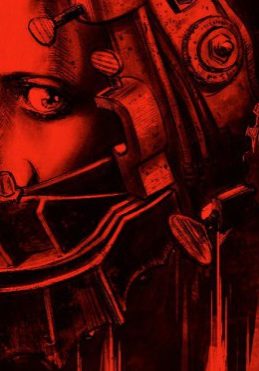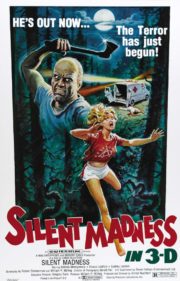A Cut Above: Celebrating a Decade of ‘Saw’
“Live or die. Make your choice.” These chilling words encapsulate the dread-filled atmosphere of the 2004 breakout horror flick ‘Saw’, which has since stained the fabric of modern cinema with its innovative storytelling and visceral terror. Directed by James Wan, ‘Saw’ unleashed a new kind of fear upon audiences on its 10th anniversary, a decade after it first set the standard for psychological horror. For the uninitiated, ‘Saw’ wraps its skeletal fingers around a daringly simple, yet horrific premise: two men wake up chained in a dilapidated bathroom, with instructions to play a twisted game for survival against the machinations of the enigmatic Jigsaw killer.
The Tape Begins: Creating a Horror Labyrinth
The atmosphere and tone of ‘Saw’ are perhaps its sharpest tools. Relying heavily on the suspense and a constant sense of foreboding, Wan meticulously crafts a claustrophobic world. The film’s grim and dirty aesthetic, coupled with the mounting anxiety of what lies ahead, compounds the audience’s fear. Through restricting locations, Wan simulates a maddening entrapment that mirrors the characters’ physical confinement.
The use of darkness and stark, industrial settings, serves to amplify the atmosphere of despair. ‘Saw’ doesn’t lean as heavily on shocking visuals as one would expect, considering its reputation. Instead, it exercises restraint to build anticipation and lets viewers’ imaginations fill in the gaps of its implied violence—a testament to Wan’s understanding that fear of the unknown often trumps what is seen.
Through a Glass, Darkly: Twists and Turns in the Dark
Counterintuitively, ‘Saw’s cinematography instills an intimate and grimy aesthetic that is almost personal—a voyeuristic window into the suffering of its characters. As the confines of the bathroom become increasingly claustrophobia-inducing, it’s the camera’s unflinching gaze that disorients. Lighting is scarce, and hues are relentlessly muted, giving rise to a visual palette that is both stark and despairing.
Crafty camera angles and thoughtful editing amplify the unease, embodying the psychological disarray experienced by the protagonists. The visual synergy of ‘Saw’ is raw and unapologetic, with a guerilla-style feel that suggests it could be unfolding in a ghastly corner of our own reality.
The soundtrack of ‘Saw’, interspersed with industrial echoes and piercing silences, serves as another serrated edge of the film’s horror arsenal. Charlie Clouser’s score is deliberately minimalist, facilitating an auditory vacuum that draws the audience into every creak and scream. Jarring sound effects are precisely placed, punctuating the terror without overwhelming the viewer.
A Chilling Legacy Carved in Flesh: The Horrors Within
We are brought face-to-face with characters who grapple with morally ambiguous choices under duress. While some performances strain credibility, it’s Cary Elwes and Leigh Whannell who evoke a tangible desperation and drive the narrative. Their portrayals offer a twistedly human dimension to the film’s horror landscape.
‘Saw’ knits together elements of psychological horror and torture, defying simple categorization. By focusing on the victims’ psyches and the intricate traps set by the Jigsaw killer, the film probes the resilience and ethical boundaries of the human spirit.
The methods of terror employed in ‘Saw’ span a spectrum. It’s a blend of implied gore, the threat of imminent violence, and the grim reality of the decisions the characters must face. This potent cocktail is dispensed in measured doses throughout the film, effective enough to leave viewers reeling without resorting to overt shock tactics.
Under the visceral veneer, ‘Saw’ probes themes of morality, survival, and the value of life itself—raising questions that linger long after the final credits. It’s these themes that offer a backbone to the chaos and differentiate ‘Saw’ from less cerebral entries in the genre.
In evaluating ‘Saw’s effectiveness as a horror movie, the verdict is that it walks a twisted path between fright-inducing and thought-provoking. Innovation, especially in the film’s context-driven scares, ensures ‘Saw’s unique place in the annals of horror.
A Puzzle Worth Solving: The Final Verdict
‘Saw’ remains a chillingly effective experience, inevitably tailored for those with a penchant for psychological horror and dark, intricate narratives. Though it might unsettle casual viewers, horror aficionados will appreciate ‘Saw’s unorthodox approach and enduring legacy.
Compared to genre staples like ‘Psycho’ or contemporary peers such as ‘The Conjuring’, ‘Saw’ stands out as an entity that commands its own morbid curiosity. The film celebrates its craft in orchestrating dread over outright gore and remains a compelling entry in the horror genre.
In closing, ‘Saw’ haunts audiences long after the screen goes dark—its strengths lying in careful construction of fear, rather than the reliance on visceral images. It’s a landmark film that redefined horror for a new generation and comes with pertinent warnings for graphic content. Fans of psychological horror should not miss the opportunity to ‘play a game’ with ‘Saw’- an encounter that is sure to leave a mark.




